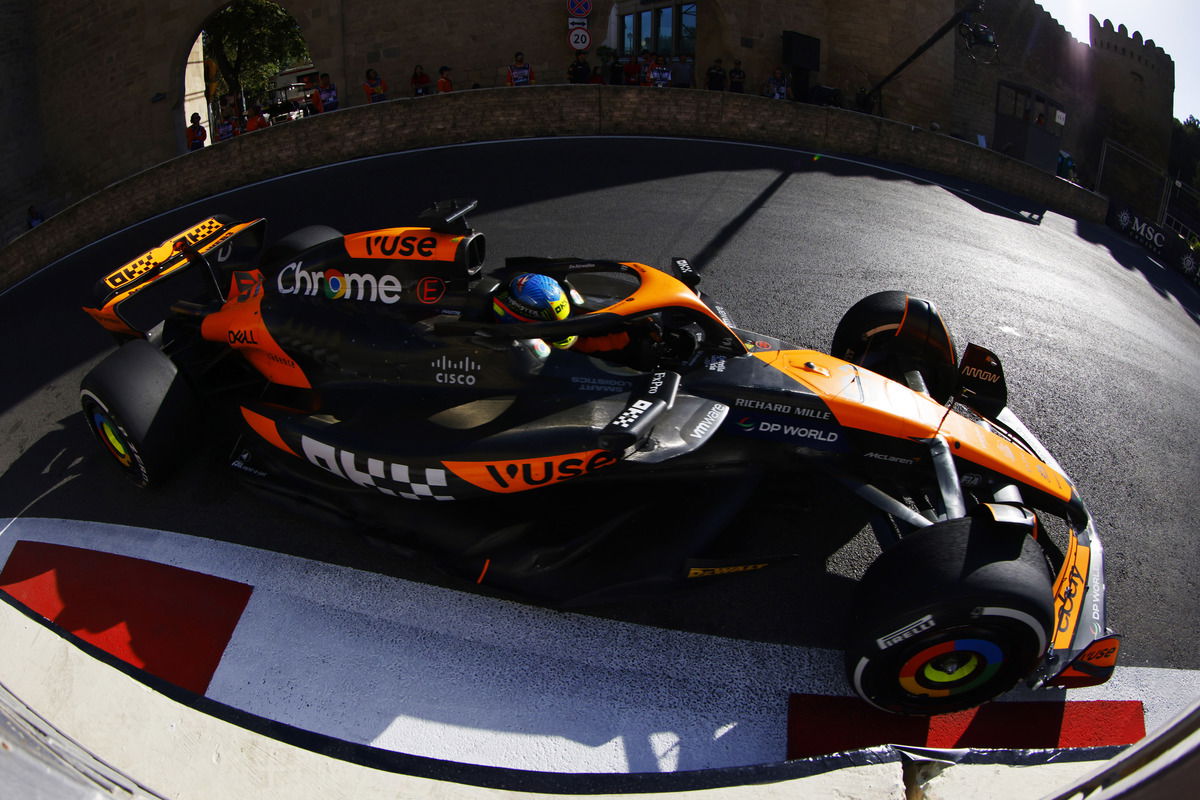

F1 teams have been issued a new technical directive imposing more stringent static load testing on wings.
A technical directive is effectively an addendum to the regulations that teams must adhere to for their cars to be deemed legal.
The new directive, specifically TD018, will be introduced for the Spanish Grand Prix, the ninth round of the 2025 F1 season will introduce greater scrutiny on front-wing deflection.
The allowable deflection during static load testing will be reduced from 15mm to 10mm.
The FIA spent the latter stages of 2024 monitoring wing flexibility across teams.
Then, cameras were fitted to cars which served no regulatory purpose but monitored aeroelasticity.
The information gathered during that process has been used to inform TD018 and marks a change of stated position from the FIA.
“Obviously, there was a lot of hoo-hah about it during the summer and early autumn,” FIA single-seater boss Nikolas Tombazis told Autosport at the end of 2024.
“We had made it quite clear to teams since 2022 at least, that we were not planning to introduce any further tests on the front wing and we stuck to that.”
Now, the governing body will ramp up testing on the rear wing from the start of the season, with testing of the front wing set to be tightened from June.
“These adjustments are aimed at further refining our ability to monitor and enforce bodywork flexibility regulations, ensuring a level playing field for all competitors to promote fair and exciting racing,” an FIA spokesperson reasoned.
Flexible wings are not new. However, the practice caught headlines last season, with McLaren and Mercedes making full use of the concept.
In Azerbaijan, McLaren brandished a rear wing that saw the top plane flex at high speed, essentially creating a mini-DRS.
After being passed legal that weekend, a reinterpretation saw the FIA suggest the Woking squad amend its design—which it duly did.
The practice caught the governing body’s eye following questions from Red Bull and Ferrari, which had not exploited the concept as fully as their rivals.
When the Scuderia eventually did invest in development, introduced in Singapore, it went on to win two races in the latter part of the season.
Both Ferrari and Red Bull were reluctant to funnel development money into flexi-wings as they expected regulations to be tightened.
Ironically, Mercedes and McLaren were the aggrieved parties when they felt Red Bull was exploiting similar regulations.
The technical directive’s introduction was expected by teams following months of discussion with the FIA.
With increased testing on the front wing only set to be introduced in June, teams impacted have had more than ample warning to develop a solution.





















Discussion about this post